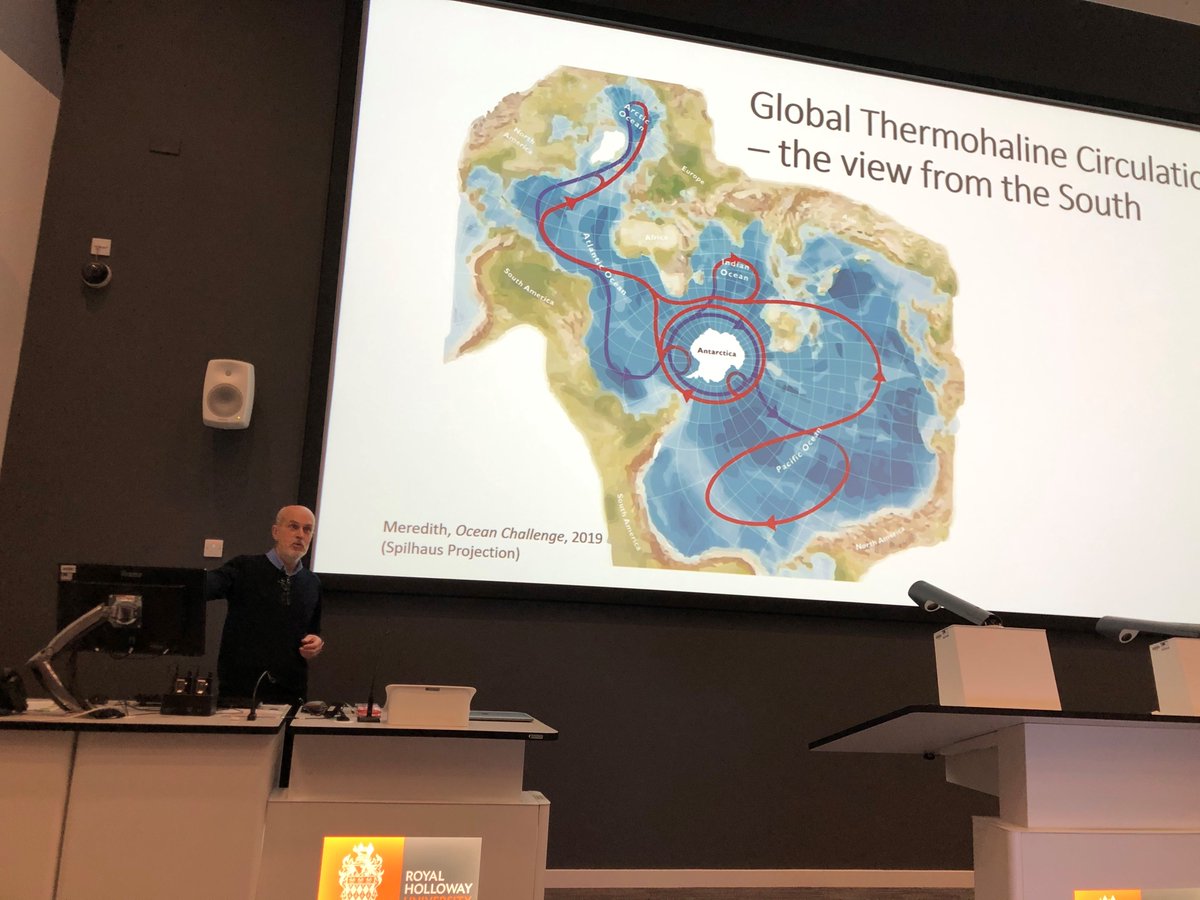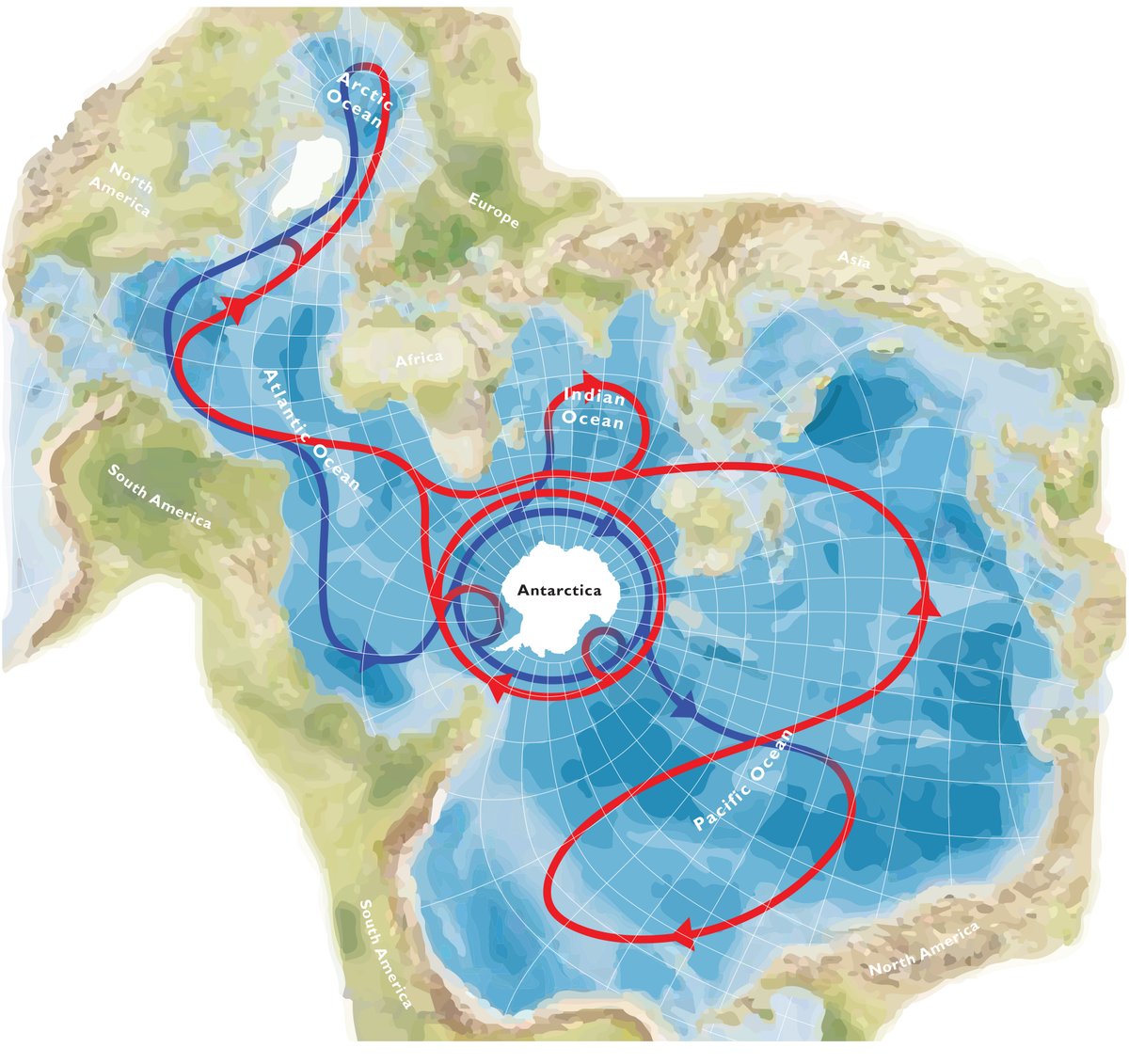
I was privileged to be invited to write a commentary on an interesting recent paper about the roughness of ice shelves by Watkins et al. (2021).
Commentary features this schematic diagram of the #ThwaitesGlacier Eastern Ice Shelf by @MarloWordyBird doi.org/10.1029/2021GL…
1/N
Commentary features this schematic diagram of the #ThwaitesGlacier Eastern Ice Shelf by @MarloWordyBird doi.org/10.1029/2021GL…
1/N

Background -
Ice shelves are floating extensions of glaciers that flow on beds hundreds of meters below sea level. They contribute "backstress" restricting outflow from many of the largest glaciers in Antarctica, thus limiting the Antarctic contribution to sea-level rise.
3/N
Ice shelves are floating extensions of glaciers that flow on beds hundreds of meters below sea level. They contribute "backstress" restricting outflow from many of the largest glaciers in Antarctica, thus limiting the Antarctic contribution to sea-level rise.
3/N

However, ice shelves are vulnerable to environmental change, as was most graphically shown by collapse of the Larsen B Ice Shelf over a period of little more than two months early in 2002. The MODIS image sequence here extends from Jan 31 to April 13. svs.gsfc.nasa.gov/2421
4/N
4/N
The subsequent flow acceleration of glaciers that had flowed into the part of the ice shelf which collapsed confirmed the role of backstress in restraining glacier flow. Figure from Scambos et al. (2004) doi.org/10.1029/2004GL…
5/N
5/N

The Larsen B was the largest of a number of ice shelves along the coasts of the Antarctic Peninsula that collapsed over the past 40 years. doi.org/10.5194/tc-4-7…
6/N
6/N

The main driver of loss of these ice shelves was rapid regional warming in the second half of 20th century, leading to development of surface melt ponds in summer and propagation of meltwater-filled crevasses by hydrofracture. doi.org/10.3189/172756…
doi.org/10.3189/2014Jo…
7/N
doi.org/10.3189/2014Jo…
7/N

Surface melting is not the only process that threatens ice-shelf stability though. For at least three decades ice shelves along the coast of West Antarctica in the Amundsen and Bellingshausen seas have been thinning due to rapid basal melting.
doi.org/10.1038/nature…
8/N
doi.org/10.1038/nature…
8/N

Flow of melt-enriched, buoyant water further damages ice shelves by eroding basal channels, which in turn causes flexural stresses that can lead to formation of additional basal and surface crevasses .
doi.org/10.1029/2012JF…
9/N
doi.org/10.1029/2012JF…
9/N

Thinning resulting from basal melting also reduces the contact area, and thus frictional resistance to flow, at lateral shear margins and over pinning points that contributes much of the backstress. Resulting flow acceleration causes further damage.
doi.org/10.1073/pnas.1…
10/N
doi.org/10.1073/pnas.1…
10/N
So, rapid basal melting of ice shelves leads to increased formation of basal melt channels, crevasses and damage zones, which all cause variations in ice thickness, or "roughness". Watkins et al. analysed rougness in radio echo sounding data from several ice shelves.
11/N
11/N

Surprisingly they found that on each ice shelf the spectrum of spatial frequencies is smooth, indicating that the different types of complexities have no characteristic widths. They also found that overall roughness correlates with basal melt rate.
12/N
12/N

Other factors may contribute significantly to roughness in other settings (e.g. some fringing ice shelves around East Antarctica), but the correlation raises the tantalising prospect that roughness may in general provide a simple quantitative measure of ice shelf "health".
13/N
13/N

It will probably never be possible to predict exactly when an ice shelf will disintegrate because, like the timing of earthquakes, this is governed by non-linear processes involved in fracture propagation.
14/N
14/N
In order to provide forewarning of when basal melting is driving an ice shelf into a highly vulnerable state though, it would be useful to have a simple quantitative measure of how its structural integrity has been impacted. Perhaps monitoring of roughness can provide this?
15/15
15/15
• • •
Missing some Tweet in this thread? You can try to
force a refresh






